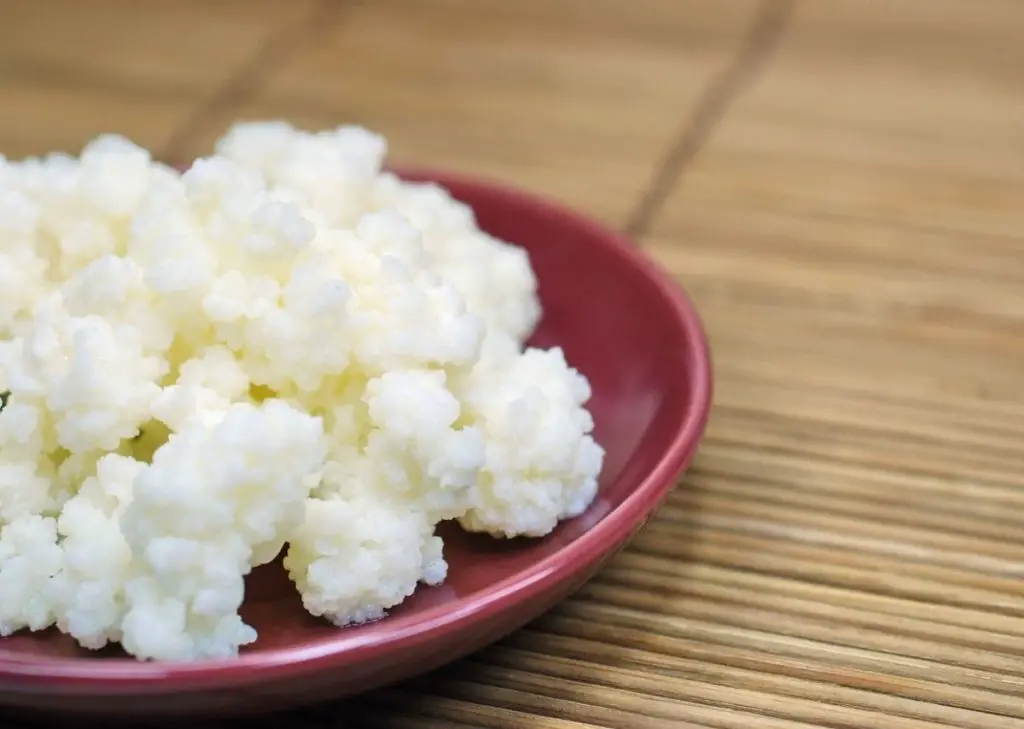Perhaps you’ve never tried kefir and aren’t sure what it is. Well, it is a very healthy fermented milk drink with a sour taste. It’s made using a culture of yeast and bacteria. It can either be used as a drink or in recipes. You could even substitute ordinary milk for kefir milk when making things like pancakes (see also Can You Freeze Pancake Batter). However, say you do use it and have some leftovers. What do you do? Do you just throw it away or can you freeze it for future use? Kefir is a liquid dairy product and unfortunately doesn\t freeze well because of this. However, it’s not impossible and in this article, we will tell you how you can freeze kefir. While it won’t be the same as fresh kefir, it will still be good to use in recipes if not in using it as a drink.

Freezing Kefir
The problem with freezing kefir is that it will separate once you come to thaw it out. Still, while you can’t drink it as it is, you can still add it to smoothies as long as there are plenty of additional ingredients. You can also use it in baking and in savory soups and stews.
You can reduce the separation by freezing the kefir in an ice cube tray, but the texture still won’t be the same as fresh kefir after thawing. Another remedy is to blend it once the kefir has thawed. The texture still won’t be perfect, but the kefir will still be perfectly adequate for a recipe.
The Two Ways to Freeze Kefir
You should just freeze the amount of kefir you need for one recipe. It doesn’t keep long in the fridge after defrosting, so you don’t want to have leftovers.
If you are going to make something like pancakes, you will probably need at least a cup of kefir. In this case, it is best to freeze the kefir in a container. However, if you are just adding a small amount of kefir to a soup or stew, the best option is to freeze it in an ice cube tray. You will have smaller amounts and can just pop the frozen cubes into the dish and allow them to melt. If you’re unsure about what you are going to use the kefir for, freeze it in cubes as this is more versatile.
Let’s now take a closer look at the two options of freezing kefir.
Freezing the Kefir in a Container
- Divide the kefir into the containers. You may decide to put the kefir into smaller containers so they will suit just one or two meals. This is better than using just one big container as you may end up with leftovers. The kefir may expand when frozen so leave a couple of inches empty at the top of the containers.
- Seal and label the containers. You will want to have airtight containers otherwise freezer burn may occur. Put on a label with the date frozen as you may forget when you put it in the freezer. This is easily done if you freeze a lot of items.
- Put the containers into the freezer.
This is all you have to do and it won’t take you more than a few minutes.
Freezing Kefir in Ice Cube Trays
- Put the kefir into the ice cube trays.
- Put the trays into the freezer. Leave them to freeze overnight or for about eight hours..
- Put the cubes into a freezer bag. You don’t have to do this. You can keep them in the tray, but you might need the trays for other uses.
- Put the freezer bag in the fridge. You can label it if you wish. This is the only disadvantage if you leave the cubes in the tray. You won’t know when the tray went in the freezer.
Freezing in ice cube trays is a little more complicated than freezing in containers, but it is more versatile. Because the cubes are already frozen when you put them in the freezer bag they won’t stick together so you can take out just as many as you want.
If you want bigger cubes, use a muffin or cupcake tin instead.
How to Thaw Frozen Kefir

The best way to thaw frozen kefir is to put it in the fridge overnight. If you are in a hurry, you can speed up the process by putting the container or bag in a bowl of lukewarm water and putting this in the fridge.
If you are defrosting cubes in a bag, make sure that the bag is leak proof as you don’t want a mess in your fridge. If you’re not sure, put the bag in a container or another bag.
It doesn’t take long to defrost kefir cubes in the fridge. You are looking at one to two hours, but a container can take between eight and twelve hours, depending on the size of the container.
If you don’t use all of the kefir you can keep it in the fridge for up to two days. If you have defrosted it in the fridge, you can refreeze it, but don’t do this if you thaw it out on your counter.
How to Defrost Kefir on Your Stove
Defrosting your kefir on the stove is not the best method to use. You should really only do this if you have forgotten to thaw out your kefir and you need it for dinner that night. It really is time-consuming so it is much better to remember to thaw it out in the fridge.
The way to defrost kefir on the stove is the same as if you were defrosting soup or a stew. This is what you have to do –
- Put the kefir in a pot on low heat. You don’t want to burn the outside by putting it on medium or high heat.
- Move the block of kefir around the pot. Turn it over so the bottom doesn’t burn.
- Keep stirring.
- Chip away at the block of kefir.
- Turn the heat on and off every minute so that the kefir doesn’t start to boil.
This method should take between ten and fifteen minutes. A disadvantage with this method is that you have to use the kefir that night. If you have any leftovers, throw them away. The kefir will go off even if you put it in the fridge.
What to do with Defrosted Kefir
You can use it like milk in cooked or baked goods (see also article on freezing croissants) . Pancakes are a good example as are cakes. You could also add it to soup or a stew.
Although it’s not advisable to drink it as it is after it has been defrosted, you can add it to smoothies. It can separate, but if you add lots of fruit or vegetables, this will hardly be noticeable. A good idea is to use a mixture of defrosted and fresh kefir. This should stop it from separating
Checking the Texture of Kefir
No matter what dish you are making, the texture of the kefir will change. You need to keep an eye on this when cooking. If you are making pancakes, for example, the batter could become runny when you add the kefir. It is better to add it slowly and stop before it reaches this point. However, if you don’t add enough, the pancakes could become dense. It’s a matter of experimenting.
Frequently Asked Questions
For how long can you freeze kefir?
It’s best to freeze it for up to four months, but it won’t lose too much taste if you keep it for longer. However, the longer you keep it in the freezer, the more likely it is that the kefir will separate.
If you freeze kefir, does it kill the probiotics?
The answer to this question is no. The probiotics become dormant, but they become active when the kefir is thawed out.

